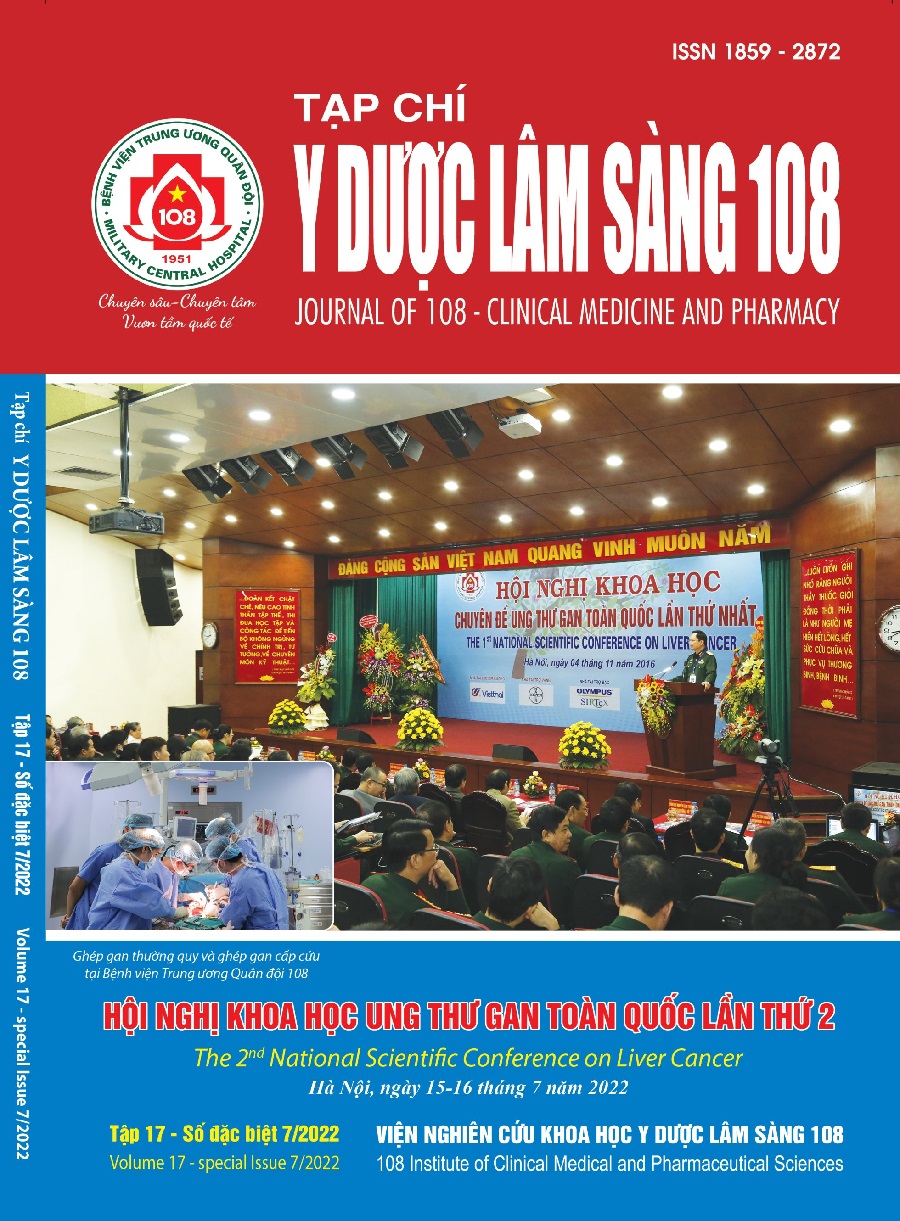Dislay of STAT 1 and STAT 3 protein signals in hepatocellular carcinoma
Main Article Content
Keywords
Abstract
Hepatocellular carcinoma (HCC) is characterized by many different factors, the inactivation of signaling pathways through overactivation of genes is one of the biomarkers in cancer. HCC is characterized by various factors, including inactivation of the STAT 1 and STAT 3 signaling pathways through overactivation of the STAT genes and disturbances in immune control. Objective: To evaluate the dislay of STAT 1 and STAT 3 protein signals in hepatocellular carcinoma. Subject and method: Determined the expression levels of two signals SAT 1 and STAT3 in HCC patients by Western blot method. Result: Both STAT1 and STAT3 proteins were expressed in HCC cells, and when STAT1 levels decreased, there was strongly phosphorylation of STAT3 Tyr 705 (pSTAT3 Tyr705) after 2 h of IFN-γ exposure but not long. When STAT3 levels decreased, IL-6 induced prolonged STAT1 signaling and interplay of STAT1 and STAT3 signaling in the presence of proinflammatory IL-6. Conclusion: STAT1 and STAT3 are important and potential biomarkers in early HCC diagnosis.
Article Details
References
2. Gabriella Regis, Sara Pensa et al (2008) Ups and downs: The STAT1: STAT3 seesaw of Interferon and gp130 receptor signalling. Semin Cell Dev Biol 19(4): 351-359. doi: 10.1016/j.semcdb.2008. 06.004. Epub.
3. Khan B, Naseem et al (2019) Machine learning approaches for liver disease diagnosing. International Journal of Data Science and Advanced Analytics 1: 27-31.
4. Gowda S Desai et al (2009) A review on laboratory liver function tests. The Pan African Medical Journal 3(17).
5. Shamima Akter, Hossain Uddin Shekhar et al (2021) Application of biochemical tests and machine learning techniques to diagnose and evaluate liver disease. Advances in Bioscience and Biotechnology DOI: 10.4236/abb.2021.126011.
6. Trần Đình Bình, Phan Ngọc Hải và cộng sự (2012) Nghiên cứu kết quả điều trị ung thư gan nguyên phát bằng dao Gamma thân tại Bệnh viện trường Đại học Y dược Huế. Tạp chí Y Dược học - Trường Đại học Y Dược Huế - Số 10. DOI: 10.34071/jmp.2012.4.8.
7. Nguyễn Công Long, Đàm Thị Phương (2022) Một số đặc điểm dịch tễ và lâm sàng bệnh nhân ung thư biểu mô tế bào gan tại Bệnh viện Bạch Mai giai đoạn 2018 - 2019. Tạp chí Y học dự phòng, T.32 S.2 (2022): Số thường kỳ DOI: https://doi.org/ 10.51403/0868-2836/2022/594.
8. Diehl AM, Potter J et al (1984) Relationship between pyridoxal 5’-phosphate deficiency and aminotransferase levels in alcoholic hepatitis. Gastroenterology 86: 632-636.
9. Tangkijvanich P, Anukulkarnkusol N et al (2000) Clinical characteristics and prognosis of hepatocellular carcinoma: Analysis based on serum alpha-fetoprotein levels. J Clin Gastroenterol 31(4): 302-308. doi: 10.1097/00004836-200012000-00007.
10. Xu J, Lin H, Wu G et al (2021) IL-6/STAT3 is a promising therapeutic target for hepatocellular carcinoma. Front Oncol 11: 760971.
11. Wang D, Zheng X, Fu B et al (2019) Hepatectomy promotes recurrence of liver cancer by enhancing IL-11-STAT3 signaling. EBioMedicine 46: 119-132.
12. N. Công Long, N. Bá Vượng (2022) Nghiên cứu sự thay đổi AFP, AFP-L3, pivka-ii trước và sau điều trị bệnh nhân ung thư biểu mô tế bào gan. Tạp chí Y học Việt Nam, 509(2). https://doi.org/10.51298/ vmj.v509i2.1802.
13. Katrin Meissl, Sabine Macho-Maschler et al (2017). The good and the bad faces of STAT1 in solid tumours Cytokine. 89: 12-20. doi: 10.1016/j. cyto.2015.11.011. Epub 2015 Nov 26.
14. Guobin He, Guann-Yi Yu et al (2011) Hepatocyte IKKβ/NF-κB inhibits tumor promotion and progression by preventing oxidative stress driven STAT3 activation. Cancer Cell 17(3): 286 297.doi: 10.1016/j.ccr.2009.12.048.
15. Sandra Rebouissou, Mohamed Amessou et al (2009) Frequent in-frame somatic deletions activate gp130 in inflammatory hepatocellular tumours. Nature 457(7226): 200-204. doi: 10.1038/ nature07475. Epub 2008 Nov 19.
 ISSN: 1859 - 2872
ISSN: 1859 - 2872
